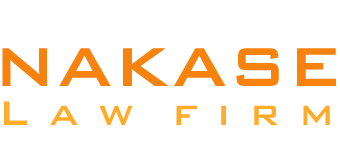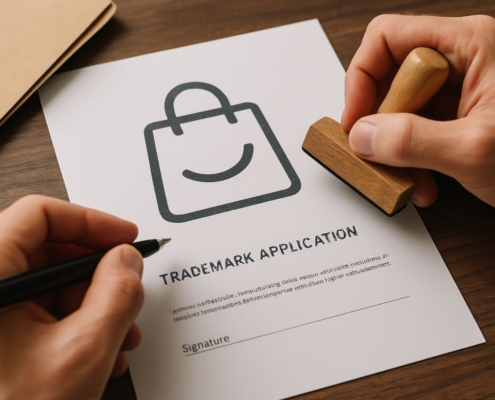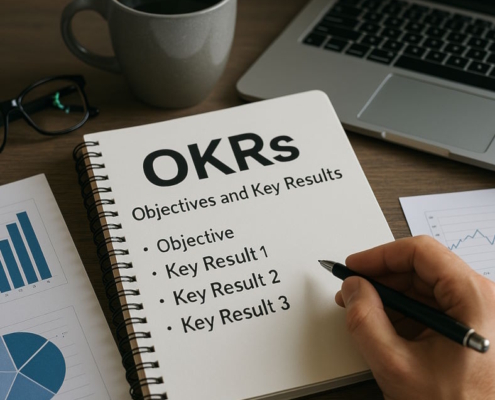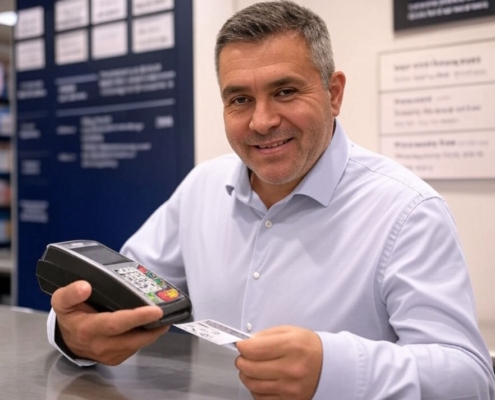What Are Upfront Payments?
An upfront payment allows a business to collect money before they’ve delivered the goods or services. Upfront payment means a business owner doesn’t have to chase after the money owed. Payment upfront minimizes account receivables and account due.
Upfront payments are a kind of transaction where a customer pays for part or all of a service prior to its completion. Naturally, a business owner might be nervous about asking for this type of payment. They might worry that the customer would not want to pay for something that they have not yet received or experienced. These are valid concerns, but one can rest assured that the concept is proven. After a business owner negotiates his or her first upfront payment, the process becomes easier over time.
If you’re like many small business owners, chances are one of the biggest challenges in your business? Collecting payments from your clients or customers. Getting paid can be a hassle, but it impacts everything, from your cash flow to your ability to pay your expenses and payroll on time. One way to ensure you have the cash you need to keep your business moving forward? Upfront payments.
Upfront payments can be billed when you sign a contract, before you purchase equipment and tools necessary for starting and finishing a project, or at other points before the project’s completion (for example, installments at set milestones). Depending on your business and clients, charging upfront may or may not be the right move.
One of the most difficult parts of running a business is managing finances, especially when the company is young and finding its feet. For business owners, there are few challenges more stressful than paying bills while waiting for customers to pay for products or services. If a business is just barely surviving, then every customer’s contribution is vital. For some businesses, therefore, asking for upfront payments from customers is critical.
What Are the Benefits of Upfront Payment Terms?
Upfront Payment Terms Build Trust
Establishing an upfront payment system can build trust between a business owner and customers. The customer must trust the word of the business owner at first, believing that the product or service will be of great quality, and therefore worth its price. When the business owner finally delivers the service, and it is indeed of excellent quality, the customer will not only be satisfied, but trusting of the business. They will feel comfortable paying upfront in the future, because they are assured of good service. Upfront payment can therefore help build a business’ reputation.
“When customers agree to pay upfront, they’re taking on some risk that you might fail to deliver what you promised, leaving them high, dry, and with a lower bank account balance.” As a business owner, you can alleviate these concerns by establishing your credibility and building trust with your new client—for example, through a visible online presence, active social media profiles, and glowing reviews and testimonials from past customers.
Example: Katie is a costume designer for a film studio. Katie loves buying custom-made jewelry from designers, and she is eager to buy a crown from Jake, an expert. Jake, however, requires payment upfront for his services. Katie is nervous, because she cannot see the finished product before paying a lot of money for it. However, she trusts that Jake is a professional and will produce a quality product. When Jake shows her the finished crown, Katie is thrilled. Now she trusts Jake completely. The next time she needs jewelry for a movie, she knows that she can rely on Jake.
Upfront Payment Improves Cash Flow
For small businesses, especially new ones, cash flow can be a big problem. This is very true for businesses whose services often turn into long-term projects. Upfront payments mean that business owners do not need to worry about late payments or the worry of not getting paid at all.
“A client or customer who fails to pay you after you’ve completed a job can have a serious impact on your cash flow. Requiring an investment upfront, whether that’s a partial or full payment, can help ensure you have enough cash on hand to keep your business moving forward.” For businesses like Shawn’s carpentry services, these measures ensure that operations do not stall due to lack of funds.
Example: Shawn runs a carpentry business, and he recently received a request to build a custom treehouse. It takes Shawn three months to source the materials for the project, as well as to draw up blueprints and hire a crew to complete the construction. In total, the project costs $15,000. Two months into the project, the customer changes their mind, saying that they are moving houses and will no longer need the treehouse. Unfortunately, Shawn has already spent $5,000. As a result, he does not get paid for his labor and has lost $5,000. To prevent this from happening again, Shawn decides to start using an upfront payment system. Customers will pay $5,000 before any work begins, then an additional $5,000 halfway through the project. This ensures that Shawn is paid for his work.
Upfront Payment Covers Out-of-Pocket Expenses
Many projects require supplies, software, and labor costs, which are all separate expenses. A partial or full payment upfront ensures that the business owner will be able to afford these expenses.
“Depending on the kind of work you do, you may need certain materials, supplies, and tools to start a project. By requiring payment upfront, you don’t have to foot the bill yourself.” This ensures that businesses avoid financial strain, especially when sourcing unique materials.
Example: Consider the above example involving Shawn the carpenter. By asking for $5,000 upfront, Shawn is guaranteeing that he has money to buy supplies, such as wood, hammers, and saws. It also allows him to hire a construction crew. This means that the customer is paying for these expenses, not Shawn. In the event the project does not proceed, Shawn is not left in a financial hole from out-of-pocket expenses.
5 Tips for How a Business Owner Can Negotiate Upfront Payments
1. Be Professional When Asking for Upfront Payments
A business owner should be aware that in the modern world, most people conduct research online. Customers are most likely studying the business and reading its reviews before becoming clients. Therefore, it is important that the business has a professional presence online. This means that a business should have social media profiles, such as Twitter, Instagram, Facebook, and TikTok. These should be professionally run, meaning they host quality content, such as well-shot videos and pictures, as well as grammatically accurate and appropriate posts. These profiles should also display positive reviews and provide contact information.
“Create a website with an online portfolio (if applicable), client testimonials and reviews. Make sure your social media profiles are up to date, including your LinkedIn profile. This helps give potential clients more confidence in your ability to complete the work—and they may be willing to pay in advance.”
Example: George runs a car modification business out of his garage, where he takes customers’ old cars and turns them into hotrods. However, George has a lot of competition in the form of professional companies with dozens of mechanics. George is a one-man business. In order to compete with the other car mod businesses, George compensates by having a well-run, professional social media presence. George provides pictures of his projects on Instagram, videos on YouTube and TikTok, as well as funny, creative tweets on Twitter. When customers search for car modification businesses online, they easily find George’s company. They are able to see his work on social media, and therefore know to expect quality work from him.
2. Know the Value of the Product or Service
In fact, most customers have no problem paying upfront for services or products. Upfront payment informs them of the total cost, and it implies honesty from a financial standpoint. There is also the implication that the business owner is a professional. They know how much their work is worth and are serious about getting it done right. Customers also appreciate knowing the total cost upfront rather than getting an invoice later that is far higher than expected.
“You should know what your services are worth using the latest industry standards. Negotiation requires hard facts and figures.” Highlighting the benefit of no hidden surprises reassures customers of value for money.
Example: Tyler makes custom furniture. Because his furniture is his own creation, he is not sure how much to charge for it. He decides to ask for upfront payment, because he needs to cover the cost of materials, such as wood, fabric, and tools. However, he decides to charge $8,000 upfront for a sofa. Unsurprisingly, he does not get any customers. No one wants to pay that much for a couch, especially before they have laid eyes on it. So, Tyler goes to an industry convention to see what other creators are charging for their pieces. He decides to charge $5,000 in total, with half provided upfront. Customers appear to appreciate this format, and are willing to pay half upfront, viewing it as less of a risk.
3. Figure Out Upfront Costs When Asking for Upfront Payments
After a business owner has established the details of a new project, he or she should then determine the amount of money to be charged upfront. The amount might include the cost of labor and materials or could simply be considered as insurance.
“After settling on a price, a business owner should write a proposal that includes a summary of the project and a breakdown of the price. The conclusion of the proposal should include an invoice.”
Example: Shirley is a seamstress who makes wedding dresses. A prospective customer emails Shirley asking for a custom wedding dress. Shirley studies the project, for which she will need to buy fabric, lace, pearls, and special sewing tools. She will also need to pay her assistant, who will be helping with the project. Shirley decides that the dress is worth $3,000 in total. She emails the client, telling them that half the cost should be paid upfront to cover the materials and labor. The other half will be paid upon the project’s completion. The customer is happy with this payment plan, and Shirley begins sewing the dress.
4. Negotiate Payment Rates When Asking for Upfront Payments
If a business owner would like to be paid upfront, they must engage in thoughtful negotiation. The key to this negotiation is being flexible.
“Some customers prefer to make online payments, especially if they are out of state or across the world. In this case, it would be wise to accept payments through PayPal, Zelle, or other payment platforms.”
Example: Clive runs a business where he makes antique Cuckoo clocks. Recently, a new customer has contacted him asking for a custom clock. Due to the expensive, difficult nature of Clive’s work, he asks for the entire payment upfront. The customer becomes a little nervous, unwilling to part with that much money before seeing the final product. Clive does not want to lose their business, so he instead asks for 50% of the money upfront. The customer feels better about this, and they agree. Clive further calms their nerves by offering two weeks for them to complete the payment.
5. Provide Reassurances for Long-Term Projects When Asking for Upfront Payments
A business owner may have a professional and established online presence, but their customers will still require reassurance. After all, they are putting money on the line when they are not sure of the outcome.
“A business owner can calm their nerves by guaranteeing that the project will be completed by a certain agreed-upon date. This deadline should be included in the written proposal so that there is written confirmation.”
Example: Johnny makes surfboards for a living. He has just received an order for a custom shortboard. Johnny asks for 50% of the payment upfront, but this makes the customer nervous. Johnny promises the customer that the board will be finished in a month’s time, and he writes down the date in their agreement. He says that if the board is not finished in that time, the customer will get all their money back. Also, he adds, the customer will receive a full refund if they are unhappy with the finished surfboard.






























